- Home
- Robert Silverberg
Fantasy: The Best of 2001 Page 6
Fantasy: The Best of 2001 Read online
Page 6
The ship lay on her port side, empty lifeboat davits reaching toward the surface. She was coated with a thick shag of marine growth: sponges and coral and great purple sea fans. Her bow lay just below us, near the top of the reef, while her stern lay downslope, held against the sandy harbor floor by two hundred feet of sea water. The holes where U.S. mines had gutted her starboard hull were still visible.
Edward ran the headlights of his sled along the Coolidge’s promenade, while I shot photos. We’d been diving together for six years, Edward locating the wrecks with that eerie combination of sixth sense and sonar sensitivity that I’d come to expect (and even take for granted), me shooting my photos. I remember when he spotted that B-17 lying off Rabaul. We hadn’t even been looking for anything that day, but the depth finder had been running, plotting a rough outline of the sea floor in blocky LCD pixels. Without a word, Edward had slowed the engine and brought the boat around. He pointed at what, to me, appeared to be nothing more than another stretch of coral reef.
“That’s an airplane,” he said. “A big airplane.”
“I think you’re full of shit.”
“A hundred dollars says I’m right.”
So we dove, and we found the B-17 embedded in the reef 150 feet beneath the surface. The photos I took made the cover of Newsweek. The B-17 had gone down in 1943, caught in severe weather after skip-bombing a Japanese cruiser. I paid Edward his hundred and bet him double or nothing he couldn’t locate anything else on the crude depth finder. In rapid succession, he found several more wrecks. First, a Japanese Zero, teeming with tiny silversides and encrusted with sponges and coralline algae, completely unrecognizable from more than twenty feet away—but as soon as it appeared on the depth finder, Edward had pointed to what he said was the prop and identified not just that it was a plane, but the exact type of plane. Ten minutes later, I was sitting in the cockpit of the Zero, accompanied by an iridescent blue parrotfish, and staring at the butts of the twin 7.7 millimeter machine guns, wondering what it had been like to fly her, to hear the roar of those guns whipping past. How had she come to rest here, I wondered, cupped in the maritime museum of the sea? Had she been outmaneuvered by an F-4U Corsair or a P-38 Lightning? Had she been forced to ditch when she ran out of fuel? With better equipment, we’d find many more Zeros in the days to come—nearly three hundred of the Japanese fighter planes were shot down over Rabaul—but that first one was special.
National Geographic saw the photos and commissioned a story. I was suddenly an expert on World War II wreckage at the bottom of the South Pacific. The assignment for a coffee table book came next. Edward and I were suddenly inseparable. We shot long forgotten Japanese warships like the Hakki Maru in Simpson Harbor, placed there by B-25s on January 17, 1944. And one of those same B-25s, not a hundred feet away, had bullets still racked and ready to fire from her twin .50 caliber guns. I photographed tractors and jeeps and tanks lost from the holds and decks of battleships and cargo vessels. Scuttled submarines. Torpedoed patrol boats. The flotsam and jetsam of the last great war. Throughout the Solomon Islands, across New Guinea and Vanuatu, we searched and we found them, one by one, each with its own story to tell.
Edward would find them. And I would photograph them.
I don’t know how he did it. Sometimes, he didn’t even look at the equipment. Sometimes we weren’t even near the equipment. I remember the Kawanishi flying boat he foun d just off shore. We were sitting on the beach at Rabaul, watching Papua New Guinean children playing in the surf. Edward’s wheelchair was firmly entrenched in the loose sand. I was dreading the struggle involved in getting him back to the Bougainville Resort, when Edward suddenly sat up and stared out at the turquoise water.
“What is it?” I asked.
“There’s something out there,” he said. His face had that haunted look I had come to know. “A plane.”
I got to my feet and looked. The waves curled white and foamy, broke around the brown legs of the children, and scattered tiny bivalves on the beach. “I don’t see anything.”
He called over some of the children and tried to talk to them, but of course they didn’t speak English. Somehow he got through to them that he thought there was something on the ocean bottom, there just outside the breakers. They rolled their eyes. Of course there’s something out there, their expressions said. One of the older boys held out his arms and soared around the beach making airplane noises, his rags flapping in the breeze, while the other children laughed and jabbered in Malaysian. Edward bribed them to ferry us out beyond the surf in their outriggers—dangerous, as we didn’t have our dive gear with us. The children were careful with him, though. Besides, they lived their lives in those canoes, tooling about the islands the way an American child would ride around town on a bicycle. We stood more chance of being swallowed by a whale than one of the children tipping a canoe and letting Edward drown.
Not more than eight feet beneath the surface, we found the Kawanishi. The children had played in it all their lives.
As I said, I don’t know how he found them. He would laugh about it when I insisted there was something paranormal about the whole experience. He would point to the sonar and the depth finders and all the fancy equipment that the National Geographic Society had bought us. He would deny that there was anything strange going on.
And then we dove the Coolidge.
In January of 1942, Japan captured Rabaul on New Britain Island and established a garrison of 100,000 troops, five airstrips, and a naval base. From this vantage point, Japan attempted to invade Port Morseby, an allied base in New Guinea. They were turned back in the Battle of the Coral Sea. In July, Japanese troops took Guadalcanal in the Solomons. U.S. Marines attacked a month later and for twenty-six weeks a channel called the Ironbottom Sound accumulated the detritus of war. American reinforcements were sent in from Espiritu Santo in the New Hebrides (now Vanuatu). It wasn’t until March 1943, in the Battle of the Bismarck Sea, that Allied forces skip-bombed the Japanese Navy at Rabaul to ribbons. In November, U.S. aircraft from the carriers Saratoga and Princeton entered Rabaul’s Simpson Harbor and bombed the Japanese fortress to impotency. But from 1942 on, Espiritu Santo, protected by a series of underwater mines, was the staging area for our operations against Rabaul.
It was one of those mines—one of our own mines—that sank the President Coolidge.
Sometimes life works that way. The mine you step on is the mine you laid years ago, the trap you set for someone else, not realizing the ultimate target was yourself. Long forgotten, but still waiting.
Sometimes you are your own worst enemy. And the most grievous of injuries are those which are selfinflicted: the guilt you carry with you, the lies you tell yourself.
Edward sipped his rum and tried to look comfortable, but I knew him too well. He fidgeted with the wheel brakes on his chair and made a great show of adjusting his bicycle gloves. Public places make him nervous, especially places like this remote bar which had never heard of accommodations for the handicapped. It had been a struggle just to get the wheelchair maneuvered through all the tables and, once there, our table was too low, meaning that Edward’s chair had to sit out in the aisle, a good arm’s length and a stretch from his drink. He’d told me before that it seemed everyone stared at him in places like this. That he could feel a million eyes on him, wondering how he’d ended up in the chair, wondering just how wasted were the remnants of his legs, hidden beneath the tweed throw. Edward was most comfortable in the sea, where the Farallon DPV gave him greater range and speed than any diver I knew. Even before he’d been able to afford the Diver Propulsion Vehicle, though, his powerful arms had made him an accomplished diver. Here . . . in the resort’s surfside bar... he was truly a fish out of water.
“You want to go on up to your room?” I asked. “I can take care of this.”
He shook his head. “No, I’ll stay. I want to make sure Gunter knows he has to have room for the Farallon.”
“After six years you don’t trust me?”
/>
“Oh, I trust you, Mickey. It’s your memory I don’t put much faith in. Sometimes,” he snickered playfully, “I think you might have skipped a decompression or two.”
I pointed at him with my shot glass. “Don’t make me have to come over there and let the air out of your tires.”
“You’d have to catch me first. We both know I can outrun you on land, too.”
It wasn’t true, but I laughed as if it was. I thought it ironic that Edward would joke about speed, when it was speed that had made him a paraplegic to begin with. According to him, he’d been outrunning a speeding ticket, his Camaro Z28 clocking over a hundred when an old woman had pulled out in front of him. He’d chosen a roadside ditch over her Chrysler LeBaron, and the rest was history. He joked that the Highway Patrol had still written him the speeding ticket.
“How’d you find this Gunter guy anyway?”
I shrugged. “Phone book. We need him. No one dives the Coolidge without a guide.” Vanuatu laws were very specific about this.
“Well, you could have found one who knew how to tell time.”
I let it go. He was just irritable because the bar made him uncomfortable. “You want another drink?”
“Tell me that’s not our man,” he said, pointing.
Gunter was fortyish. Long hair. Khaki shorts. Flip flops. Hawaiian shirt, mostly hidden by the fact that his right arm hung in a white sling. He spotted us, waved, and made his way through the tables. “Mick Beai?”
“It’s pronounced bay-eye,” I told him, taking the offered hand. “You’re our guide?”
He nodded vigorously. “Yes. Guide. That’s me. Gunter.” His accent was the thick guttural of Northern Germany. Hamburg maybe. His w’s were v’s. The end of each word was clipped off. His vowels came from somewhere deep within his gut. How he’d come to be in the South Pacific was probably quite an involved story.
I introduced him to Edward.
“Forgive me for asking,” Edward said, “but how the hell do you plan to dive with your arm in that sling?”
Gunter cocked an eyebrow. “You would ask Gunter such a thing?” Then he laughed, a great hearty bear laugh, and slapped Edward’s wasted thigh (an offense for which I surely thought Edward would actually rise from his chair and kill the German). “I’m kidding, friend. Gunter will not dive.” He pulled out a chair. “Sit? Yes?” He dropped into the chair, which groaned under his weight.
“The law,” Gunter said “says you need guide. Need Gunter. Law does not say that Gunter must dive with you.” He grinned, knowing we knew he was full of shit, but that we wouldn’t say anything. “Gunter take you out to mooring at bow of Coolidge. You dive. Gunter wait up top. You bring nothing up with you. Law say that everything must stay in wreck. First dive, you maybe go as far as the Lady, but no further into ship, no further down toward stern. Depth maybe 45 meters. You use safety lines inside, cause Gunter does not like to dive for corpses, and the Coolidge . . . she is very possessive. Very often there are silt-outs. Next day you swim to stern. Over 70 meters.”
“Decompression?”
“Forty minutes.”
It was a bit much by my quick mental estimate, but I understood his caution. The nearest chamber was in Australia. “Gunter show you deco stops. Lovely coral garden. Lots of fish. Maybe moray eel.” He tried to sound sinister, but his voice was already a nightmare. “Maybe shark or two!” He laughed. “You take pictures. You swim around and look at fish. Decompression time go very slow for you.”
“Fast.”
“Oh. Yeah. Time go fast.” He laughed again. “You have great dive, Mick. Tell all friends Gunter is the best guide ’cause he not breathe over your shoulder the whole time.” He patted his injured arm. “Dislocated shoulder.”
“Do you have maps of the interior?” Edward asked. We had our own, but local guides usually have maps that they’ve annotated. The interior of a ship that’s been on the bottom as long as the Coolidge would hardly match her original blueprints.
“Gunter show you maps. First day, though, no further than the Lady. Everyone wants to see the Lady. Toilets, too,” he guffawed. “Everybody wants to see the toilets!”
“The two divers who died in ’96,” I asked, “what happened?”
Gunter shrugged. “No guide. No safety lines. Caught in silt-out . . . and drowned.”
* * *
The President Coolidge began her career as a luxury liner in 1931. Built by Newport News Shipbuilding, her interiors were paneled in rare woods, draped in silk, lit by skylights of cathedral glass. She displaced nearly twenty-two thousand tons and was more than six hundred and fifty feet long. Her two steam turbine engines were capable of sustaining twenty knots. In 1942, just after the Japanese entered the war, she was converted to an Army troop transport and put into service in the South Pacific. Her finery was ripped out. Her promenade deck was crowded with three rows of extra toilets to accommodate the large number of troops onboard. Guns were mounted on her decks.
On her seventh voyage for the military, while entering Segond Channel on approach to Espiritu Santo, staging base for hard-pressed Allied troops on Guadalcanal, the Coolidge missed a warning signal from shore and hit two U.S. mines. She was carrying more than five thousand men, most of them from the 43rd Infantry Division. The ship’s Master, Captain Henry Nelson, ran her aground on a coral reef to give the men time to abandon ship. Just over an hour later, the Coolidge, which had listed almost completely over on her port side, slipped off the reef and sank. By this time, nearly all the men on board had been evacuated. Dead were a fireman, Robert Reid, killed by the second explosion, and an Army Officer, Captain Elwood Euart, whose death remains something of a mystery. He and another Army Officer, Warren Covill, were instrumental in saving hundreds of lives by rigging a line to guide men across the treacherously tilted deck. When everyone was clear, they went to make their own escape, but Euart turned back and went below. The ship slipped from the reef. Covill was sucked under and barely escaped alive. Euart was never recovered. It’s believed that, in the confusion, Euart thought there were still men below decks. He was posthumously awarded the Distinguished Service Cross.
Today, the Coolidge is the largest, intact, accessible shipwreck. And she’s certainly one of the best known. People have come from around the world to see the last bit of refinery left to her: the Lady. The Lady waits in the main smoking lounge, over the marble fireplace, an Elizabethan figure with a unicorn. The rare woods of the fireplace have been eaten by teredo worms, and the unicorn has lost his horn, but the marble and the Lady remain. In her fine white gown with its gold ruffles and brocade, she watches, a somber sentinel to the waste at the bottom of the sea.
Shipwreck divers can’t help but believe in ghosts. You don’t spend your life diving ocean graveyards such as the South Pacific without acquiring an affinity for the drowned. It’s always there, the possibility of death; just an equipment failure or stupid mistake away. Nor can you photograph such wreckage without imagining the last minutes of those who’ve gone before you: the frantic haste to abandon ship, the crushing weight of all that water sweeping over the deck, the agony of waiting for that last breath and then seeing that final air bubble squeezed from your lungs, meandering, fading with your darkening vision, toward an impossibility distant surface.
World-renowned underwater photographer David Doubilet has said, “the minute a ship crosses that final barrier between air and surface, as it settles into the sea, it loses the heat and the pain and the blood and the smell, and it becomes a sculpture.”
The Coolidge lay beneath us like a surreal work of art in the murky depths: Descending the mooring line, with Gunter waiting above in his boat, I was aware of the demarcation of light and dark. The scintillating surface above. The gray-green hue of the sea between. And the black mass of the wreck below us, her stern vanishing in the gloom. Edward hit the lights on the Farallon and they played over the Coolidge’s bow. I snapped a photo, capturing the chain locker, a three-inch gun battery, and the dark o
pening of her forward cargo hold. Her masts were still in place on the foredeck, their tips buried in the sand. The crow’s nest was still in place. A massive anchor leaned against the nearly vertical deck, replete with fairy shrimp and feather duster worms, its chains tangled with the masts and metal cables and several long silent hoists. Everything was coated with heavy marine growth, a veil of wet, brown-green dust that swirled murkily in the eddies behind Edward’s sled.
We proceeded to the cargo hold where Edward let his lights penetrate the gloom. The hold was crammed with the mechanisms of war: six-wheeled Studebaker trucks, Jeeps, huge artillery guns, aircraft drop tanks, rifles, Thompson submachine guns, helmets, barrels, mysterious and mostly decomposed crates, and even a typewriter. Everything was jumbled together against the port bulkhead, seething with marine life.
I snapped my pictures, trying to capture the ghosts and the voices. Such a picture should do more than tell a story. Such a picture should haunt, should echo with those final moments.
We entered through the gaping windows of the bridge and worked our way aft along the promenade. The deck here was littered with discarded equipment: rifles, gas masks, metal ladders, helmets, .303 cartridges, plates, cups, cooking utensils . . . a single inexplicable tuba, now the home for an octopus. The famous toilets—tightly spaced with absolutely no concern for privacy—gleamed white, their porcelain surface immune to the assault of the reef.
From the promenade, we entered the main dining hall. Here, the quarters became too tight for Edward’s sled. Also, there was the very real danger that the Farallon’s fan might stir up too much of the silt in the wreck. Though the walls of the promenade had collapsed, leaving an easy escape through the remaining steel girders, technically this was still a penetration dive with all due caution. Divers had become confused and died in similar conditions. Silt can be blinding. With no easy orientation, a man can become confused, can forget all the basics, and wind up joining the vast number of dead in the sea.

 The Longest Way Home
The Longest Way Home Hawksbill Station
Hawksbill Station A Time of Changes
A Time of Changes This Way to the End Times: Classic Tales of the Apocalypse
This Way to the End Times: Classic Tales of the Apocalypse Beyond the Gate of Worlds
Beyond the Gate of Worlds Lord Valentine's Castle
Lord Valentine's Castle The Man in the Maze
The Man in the Maze Tales of Majipoor
Tales of Majipoor Time of the Great Freeze
Time of the Great Freeze The Collected Stories of Robert Silverberg, Volume 3: Something Wild Is Loose: 1969-72
The Collected Stories of Robert Silverberg, Volume 3: Something Wild Is Loose: 1969-72 Planet of Death
Planet of Death Trips: The Collected Stories of Robert Silverberg, Volume Four
Trips: The Collected Stories of Robert Silverberg, Volume Four In the Beginning: Tales From the Pulp Era
In the Beginning: Tales From the Pulp Era Hot Sky at Midnight
Hot Sky at Midnight Valentine Pontifex
Valentine Pontifex Up the Line
Up the Line Thorns
Thorns Amanda and the Alien
Amanda and the Alien Star of Gypsies
Star of Gypsies Nightwings
Nightwings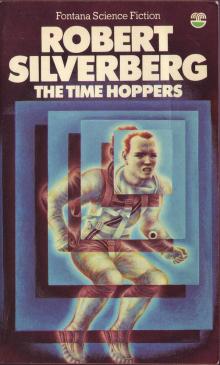 The Time Hoppers
The Time Hoppers Blood on the Mink
Blood on the Mink Dying Inside
Dying Inside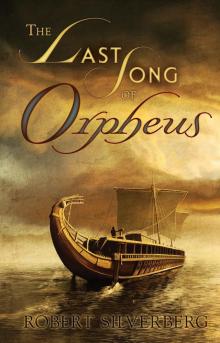 The Last Song of Orpheus
The Last Song of Orpheus The King of Dreams
The King of Dreams The Stochastic Man
The Stochastic Man The Collected Stories of Robert Silverberg, Volume Seven: We Are for the Dark
The Collected Stories of Robert Silverberg, Volume Seven: We Are for the Dark The Millennium Express: The Collected Stories of Robert Silverberg, Volume Nine
The Millennium Express: The Collected Stories of Robert Silverberg, Volume Nine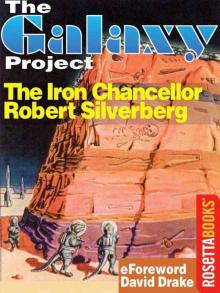 The Iron Chancellor
The Iron Chancellor Lord Prestimion
Lord Prestimion To Open the Sky
To Open the Sky The World Inside
The World Inside Chains of the Sea
Chains of the Sea The Collected Stories of Robert Silverberg, Volume Five: The Palace at Midnight
The Collected Stories of Robert Silverberg, Volume Five: The Palace at Midnight Postmark Ganymede
Postmark Ganymede The Second Trip
The Second Trip The Collected Stories of Robert Silverberg, Volume 4: Trips: 1972-73
The Collected Stories of Robert Silverberg, Volume 4: Trips: 1972-73 Son of Man
Son of Man Tom O'Bedlam
Tom O'Bedlam To the Land of the Living
To the Land of the Living To Be Continued: The Collected Stories of Robert Silverberg, Volume One
To Be Continued: The Collected Stories of Robert Silverberg, Volume One Shadrach in the Furnace
Shadrach in the Furnace The Chalice of Death: Three Novels of Mystery in Space
The Chalice of Death: Three Novels of Mystery in Space The Queen of Springtime
The Queen of Springtime To Be Continued 1953-1958
To Be Continued 1953-1958 Legends
Legends Roma Eterna
Roma Eterna To Live Again
To Live Again At Winter's End
At Winter's End Needle in a Timestack
Needle in a Timestack To Live Again and the Second Trip: The Complete Novels
To Live Again and the Second Trip: The Complete Novels Lord of Darkness
Lord of Darkness The Mountains of Majipoor
The Mountains of Majipoor The World Outside
The World Outside The Alien Years
The Alien Years The Book of Skulls
The Book of Skulls The Face of the Waters
The Face of the Waters Gilgamesh the King
Gilgamesh the King The Collected Stories of Robert Silverberg, Volume 6: Multiples: 1983-87
The Collected Stories of Robert Silverberg, Volume 6: Multiples: 1983-87 The Happy Unfortunate
The Happy Unfortunate Three Survived
Three Survived Cronos
Cronos Tower of Glass
Tower of Glass Legends II
Legends II The Planet Killers
The Planet Killers The Collected Stories of Robert Silverberg, Volume 2: To the Dark Star: 1962-69
The Collected Stories of Robert Silverberg, Volume 2: To the Dark Star: 1962-69 Downward to the Earth
Downward to the Earth Lord Valentine's Castle: Book One of the Majipoor Cycle
Lord Valentine's Castle: Book One of the Majipoor Cycle Hot Times in Magma City, 1990-95
Hot Times in Magma City, 1990-95 Hunt the Space-Witch! Seven Adventures in Time and Space
Hunt the Space-Witch! Seven Adventures in Time and Space Majipoor Chronicles
Majipoor Chronicles The Robert Silverberg Science Fiction Megapack(r)
The Robert Silverberg Science Fiction Megapack(r) Starman's Quest
Starman's Quest Car Sinister
Car Sinister Worlds of Maybe
Worlds of Maybe Fantasy The Best of 2001
Fantasy The Best of 2001 Revolt on Alpha C
Revolt on Alpha C Homefaring
Homefaring The Pardoner's Tale
The Pardoner's Tale Sailing to Byzantium - Six Novellas
Sailing to Byzantium - Six Novellas The Chalice of Death
The Chalice of Death Sundance
Sundance A Tip on a Turtle
A Tip on a Turtle Nebula Awards Showcase 2001: The Year's Best SF and Fantasy Chosen by the Science Fiction and Fantasy Writers of America
Nebula Awards Showcase 2001: The Year's Best SF and Fantasy Chosen by the Science Fiction and Fantasy Writers of America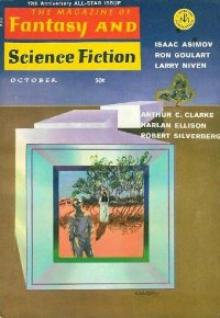 The Fangs of the Trees
The Fangs of the Trees The Palace at Midnight: The Collected Work of Robert Silverberg, Volume Five
The Palace at Midnight: The Collected Work of Robert Silverberg, Volume Five The Millennium Express - 1995-2009 - The Collected Stories of Robert Silverberg Volume Nine
The Millennium Express - 1995-2009 - The Collected Stories of Robert Silverberg Volume Nine Book of Skulls
Book of Skulls Passengers
Passengers Something Wild is Loose - 1969–72 - The Collected Stories of Robert Silverberg Volume Three
Something Wild is Loose - 1969–72 - The Collected Stories of Robert Silverberg Volume Three Multiples
Multiples Starborne
Starborne The Masks of Time
The Masks of Time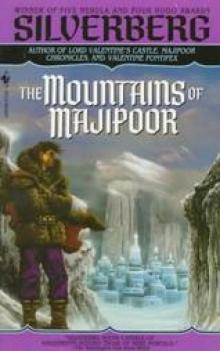 The Mountains of Majipoor m-8
The Mountains of Majipoor m-8 Multiples (1983-87)
Multiples (1983-87) Those Who Watch
Those Who Watch In the Beginning
In the Beginning Earth Is The Strangest Planet
Earth Is The Strangest Planet Collision Course
Collision Course Neutral Planet
Neutral Planet To the Dark Star - 1962–69 - The Collected Stories of Robert Silverberg Volume Two
To the Dark Star - 1962–69 - The Collected Stories of Robert Silverberg Volume Two Mutants
Mutants Sailing to Byzantium
Sailing to Byzantium When We Went to See the End of the World
When We Went to See the End of the World Robert Silverberg The Science Fiction Hall Of Fame Volume One, 1929-1964
Robert Silverberg The Science Fiction Hall Of Fame Volume One, 1929-1964 To Be Continued - 1953–58 - The Collected Stories of Robert Silverberg Volume One
To Be Continued - 1953–58 - The Collected Stories of Robert Silverberg Volume One Valentine Pontifex m-3
Valentine Pontifex m-3 Gianni
Gianni Majipoor Chronicles m-2
Majipoor Chronicles m-2 We Are for the Dark (1987-90)
We Are for the Dark (1987-90) Waiting for the Earthquake
Waiting for the Earthquake Fantasy: The Best of 2001
Fantasy: The Best of 2001 How It Was When the Past Went Away
How It Was When the Past Went Away Beauty in the Night
Beauty in the Night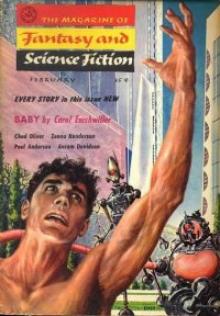 The Man Who Never Forgot
The Man Who Never Forgot The Book of Changes m-9
The Book of Changes m-9 Lord Valentine's Castle m-1
Lord Valentine's Castle m-1 This Way to the End Times
This Way to the End Times Queen of Springtime
Queen of Springtime Legends-Volume 3 Stories by the Masters of Modern Fantasy
Legends-Volume 3 Stories by the Masters of Modern Fantasy The Palace at Midnight - 1980–82 - The Collected Stories of Robert Silverberg Volume Five
The Palace at Midnight - 1980–82 - The Collected Stories of Robert Silverberg Volume Five Something Wild is Loose: The Collected Stories of Robert Silverberg, Volume Three
Something Wild is Loose: The Collected Stories of Robert Silverberg, Volume Three Multiples - 1983–87 - The Collected Stories of Robert Silverberg Volume Six
Multiples - 1983–87 - The Collected Stories of Robert Silverberg Volume Six Alaree
Alaree Three Survived: A Science Fiction Novel
Three Survived: A Science Fiction Novel Defenders of the Frontier
Defenders of the Frontier The New Springtime
The New Springtime We Are for the Dark - 1987–90 - The Collected Stories of Robert Silverberg Volume Seven
We Are for the Dark - 1987–90 - The Collected Stories of Robert Silverberg Volume Seven The Science Fiction Hall of Fame, Volume One 1929-1964--The Greatest Science Fiction Stories of All Time Chosen by the Members of the Science Fiction Writers of America
The Science Fiction Hall of Fame, Volume One 1929-1964--The Greatest Science Fiction Stories of All Time Chosen by the Members of the Science Fiction Writers of America Master Of Life And Death
Master Of Life And Death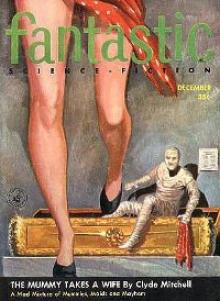 Choke Chain
Choke Chain Sorcerers of Majipoor m-4
Sorcerers of Majipoor m-4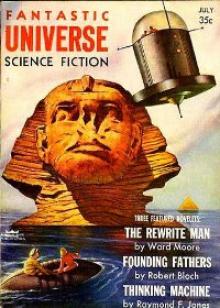 Absolutely Inflexible
Absolutely Inflexible Trips - 1962–73 - The Collected Stories of Robert Silverberg Volume Four
Trips - 1962–73 - The Collected Stories of Robert Silverberg Volume Four Hot Times in Magma City - 1990-95 - The Collected Stories of Robert Silverberg Volume Eight
Hot Times in Magma City - 1990-95 - The Collected Stories of Robert Silverberg Volume Eight Far Horizons
Far Horizons The Queen of Springtime ns-2
The Queen of Springtime ns-2 The Seventh Science Fiction Megapack
The Seventh Science Fiction Megapack Invaders From Earth
Invaders From Earth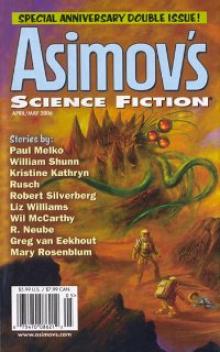 Hanosz Prime Goes To Old Earth
Hanosz Prime Goes To Old Earth The Macauley Circuit
The Macauley Circuit Science Fiction: The Best of 2001
Science Fiction: The Best of 2001 To the Dark Star: The Collected Stories of Robert Silverberg, Volume Two
To the Dark Star: The Collected Stories of Robert Silverberg, Volume Two Stochastic Man
Stochastic Man Legends: Stories By The Masters of Modern Fantasy
Legends: Stories By The Masters of Modern Fantasy To Live Again And The Second Trip
To Live Again And The Second Trip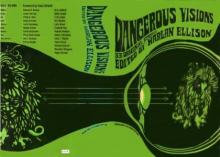 Flies
Flies The Silent Invaders
The Silent Invaders Ship-Sister, Star-Sister
Ship-Sister, Star-Sister